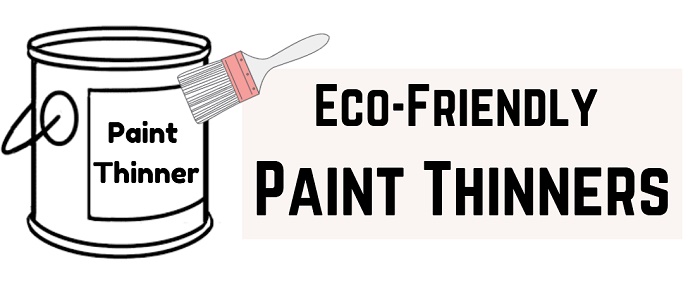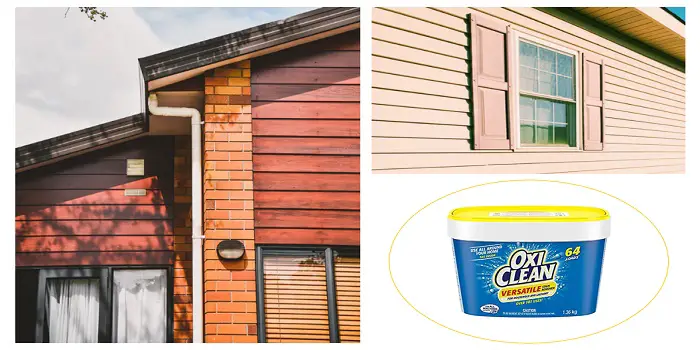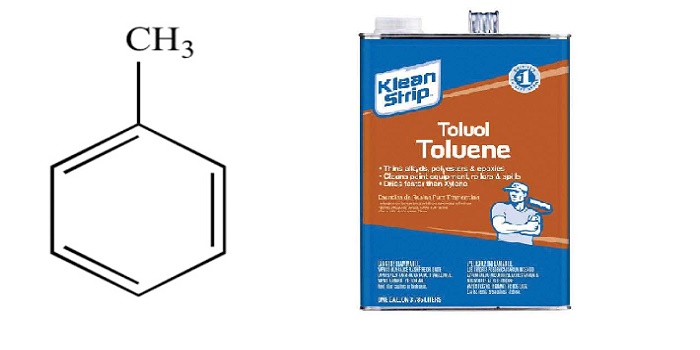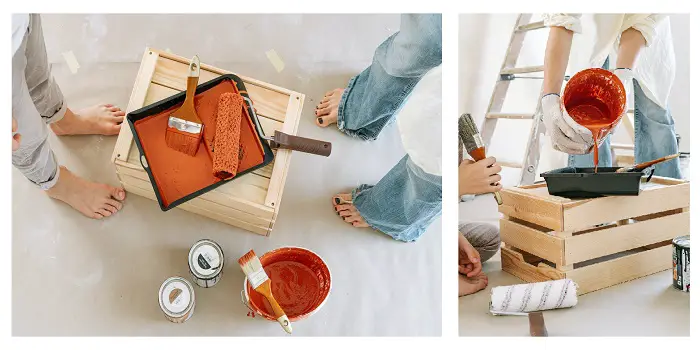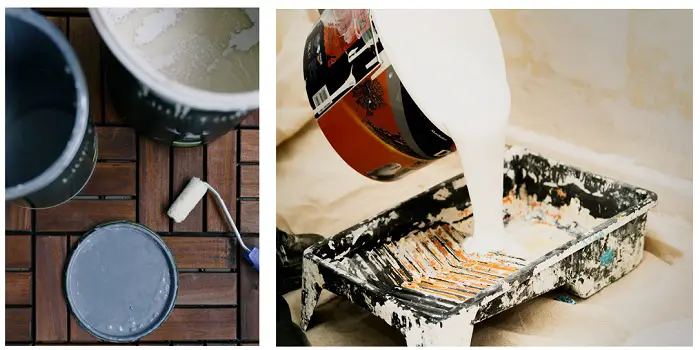
Paint thinner is one essential item you will use whenever you want to paint the walls or furniture in your home.
However, the key to choosing the proper thinner comes down to understanding the different types that are available on the market.
Some of these solvents are explicitly designed for thinning the paints and cleaning paintbrushes, while the others are multipurpose and can also be used for cleaning machinery parts, equipment, and even guns.
Since not all kinds of paint thinners are made equal, you will need to know about them in detail so that you can choose the right product for completing your paint project.
What's Here in the Article:
Types of Paint Thinners
When talking about types of paint thinners used for oil-based paints, stains, and varnishes, there can be various different kinds.
The most common paint thinner types include lacquer thinner, turpentine, mineral spirits, and alcohol.
1- Lacquer thinner
It’s a thinner which is made by mixing several paints. It is not a top-notch paint-thinning agent but can be used to clean brushes and remove residual adhesive.
It is also effective in cleaning fast-drying wood paints.
2- Turpentine
If you are not on a tight budget and want the best solvent to thin your paint without causing any environmental pollution, then you should go for turpentine.
It is better recommended for cleaning purposes rather than for softening hard paints.
3- Mineral spirits
It is odorless and is used to dissolve paint and make them thinner.
It is neither volatile nor flammable, but it vaporizes if left open for a long time.
4- Alcohol
This works as a natural thinner that can be used to remove soft pencil marks.
You can also use it to thin shellac-based paints and to clean paint brushes used in applying shellac paints.
Out of all these options, Mineral Spirits or White Spirit is best suited for thinning out enamel paints, oil-based varnish, and polyurethane.
Polyurethane thinners (also called PU thinners) are usually colorless and are used for spraying polyurethane topcoats.
Then there is also 2k Universal thinner.
The 2k thinners are among the pure thinners that are generally used for thinning polyester basecoats, 2K paints, lacquers, pearlescent, and candy base paints.
While most of these solvents are available in standard sizes of 1 liter and 4 liters, each of them comes with different composition, strength, and solubility.
Plus, the raw materials used to make (like toluene, acetone, naphtha, glycol ethers, methyl ethyl ketone, etc.) and their toxicity may also differ significantly.
Why is Paint Thinner Important?
Regardless of their type and ingredients, the main purpose of all these different paint thinners is to provide a superior top-notch finish.
You should essentially use them to blend/dissolve into your preferred primers, paints, oil-based coatings, varnishes, etc, to reduce their viscosity.
Reducing the tackiness of the paint by using paint thinners ensures that it can be sprayed easily without sticking or blocking the sprayer nozzles.
Paint thinners also serve as an important agent for removing oil-based paint from brushes, rollers, trays, and other equipment while the paint is still wet.
However, if the paint has dried, you will need to use acetone, which is the only solvent that can dissolve dried-out paint.
How to Choose the Right Paint Thinner?
With an assorted range of oil and latex-borne paints accessible in the market, the customers have been provided with too many options for paint thinners as well.
Though you have several brands and varieties of solvents present in the market, you need to make sure that you use the right thinner, which is gentle on your skin, safe to use, and budget-friendly.
1: Volatility
Usually, all paint thinners are inflammable.
Thus, you need to be cautious that the paint thinner you are using isn’t very volatile and should always be placed away from nearby fire sources.
Depending on their chemical property, paint thinners can also evaporate quickly when left in the open.
So, make sure you choose a thinner that doesn’t evaporate quickly so you can use them for a longer time.
Also, make sure that the container in which you keep them is always air-tight.
2: Patch test
Different types of thinners will react in different ways to paints and other solvents.
So, make sure you do a small patch test on the paint and the surface you intend to paint – before you buy them in a large quantity.
3: Eco-friendly
Since paint thinners can be toxic and can emit harmful fumes, many manufacturers have developed eco-friendly paint thinners alternatives for the sake of the environment.
So, if you want to be safe from fumes, try to go for green products that emit lesser toxins in the environment and keep the air around you clean.
Tips for Using the Paint Thinners Correctly
While latex-based primers and paints can be conveniently mixed and thinned with water, oil-based products will need specific paint thinners like mineral spirits for smoother application and cleaning.
If you are using these toxic solvents for the first time, make sure you know how to use them correctly to avoid damage.
Here are a few tips you will need to follow when using paint thinners.
1- Choose the right product
Remember, paint thinners used for cleaning differ from those used for spray application.
The basic difference between the two will generally lie in their purity.
Different types of thinners may contain a different number of particles.
Therefore, the one suitable for cleaning may not be good for spraying as the large volume of debris it contains can clog your spray gun.
Plus, these lower-quality thinners can also compromise the finishing you achieve.
So, keep in mind that the purer the product is, the better the finish you will get.
2- Use the right amount
When using paint thinners for your paint project make sure you do not use too much of them.
For most jobs, a maximum of 4:1 paint to thinner ratio will be appropriate and can work well.
If you want to try more or less, check on the paint container labels for the manufacturer’s guidelines.
They may have listed the recommended paint-to-paint thinner ratio based on your paint or primer type.
Keep in mind that each type of paint will come with different consistencies, and the technique you use for thinning may differ.
For example, if you are spraying the paint with a sprayer gun, you may need to thin the paint bit more than compared when using it with a paintbrush or a roller.
If you use too much thinning agent, application with a paintbrush can become difficult.
Due to the paint becoming too thin, you may get runs and sags in the finish.
Plus, the drying time of the paint can also be affected, which will again affect the overall finishing.
3- Mix it well
When mixing the paint thinner, also make sure that you pour it into a paint bucket slowly.
While adding the small amount of paint thinner at a time, keep on stirring the mixture with a paint stirrer or a wooden stick.
Mix it for several minutes and check the consistency, before you add more solvent into the bucket.
While mixing the paints and solvents, one thing you should remember is that the cold paint will always appear to be thicker than it actually is.
Since this can deceive your purpose, you should try to add the thinner at room temperature.
This will avoid mixing too much paint thinner in the paint mix.
4- Protect before application
Paint thinners are extremely flammable, and their vapors can irritate your skin, lungs, nose, and throat.
When inhaled, these can also cause nausea, headache, or tiredness.
So, when working with paints and toxic solvents, you should never do any work without wearing safety eyewear, gloves, and respirators.
Also, make sure that the location you are working in is kept ventilated and free from dangerous fumes.
5- Dispose of or store safely
Finally, when you are done with your paint project, you should always store or dispose of the solvent responsibly.
When storing, keep them in a container that is safe and does not affect their properties.
Make sure that the area you choose in your home is far away from the sources like heat, ignition, pets, and children.
When you have decided on the area…
- Pour the paint thinner into a glass container, and seal it tightly.
- Label the bottle or a jar clearly as “Toxic Paint Thinner” or “Toxic Solvents,” or simply “Danger”.
- Now safely keep the container at your preferred location for several weeks or months.
If disposing of, do not pour them down into your sink or drain.
Instead, check your local laws and guidelines to safely dispose of the solvents at your local hazardous waste disposal location.
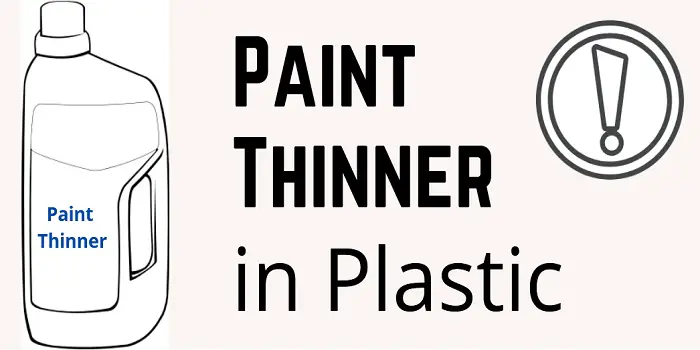
Can You Store Paint Thinner in Plastic Container?
Paint thinners come at a cost.
Storing them for reusing can be, therefore, tempting – if you have some left behind after you are done with your paint project.
But remember, storing paint thinners in a plastic bottle or a plastic-made container isn’t recommended as they can eat through the plastic material if left for long.
Instead, it’s the best strategy to keep the paint thinner and other similar paint solvents in a seal-tight glass bottle, jar, or container.
What will happen if you store paint thinner in plastic?
As paint thinners come with a flashpoint of 105 F and are classified as Class II combustible, it’s not safe to store them in plastic for long.
Depending on the type of plastic material (ABS plastic, HDPE, LDPE, PET, PP, or EPDM), paint thinners may melt the plastic bag creating a huge mess.
Plus, the vapors emitted by the reaction of thinner and vinyl-based plastic materials can also be very harmful.
Many times, the reaction can also cause the burning of the material, which can be highly dangerous for families.
Long story short – even though some solvents can resist the plastic material, you should avoid keeping solvents like lacquer thinner, acetone, turpentine, xylene, and toluene in materials like PVC plexiglass, rubber, neoprene, polypropylene, polyurethane, and silicone.
The best material for storing these solvents and paint thinners is a glass or a metal container.
Note:
According to osha.gov laws, there are approved plastic one-gallon containers that are safe to store paint thinners.
If required, you can get these approved plastic containers in the paint store or a hardware store for packaging.
Will paint thinner evaporate if left open?
Yes, most paint thinners are highly volatile.
So, if you keep them open in a bottle, container, or jar, they will evaporate.
How long it will take to evaporate will, however, depend on the type of paint thinner, the size of the container, and the opening it has!
It may take a few hours or sometimes longer than one day.
On the other hand, if sealed tightly in the container, you can keep the paint thinners for several months without worrying about their rate of evaporation.
Final Thoughts
The major issue about DIY painting is that it can cause serious spots and stains on your clothes, furnishing, flooring, and body.
Paint thinners are therefore important not only for thinning paints but also for quick paint removal and cleaning.
Apart from the thinners given above, there can be other thinners available in the market.
Although most of them serve nearly the same purpose, it’s important to keep safety as your top priority, when working with them.
With paint thinners, always work in a tidy and well-ventilated area.
Also, remember that all thinners will evaporate quickly.
So, make sure you purchase them in small amounts so that they don’t get wasted.
Share the post "What are the Different Types of Paint Thinners?"

Douglas Becker (aka Painter Doug) has over twenty years of experience as a painter in Adkins, Texas. At present, he resides in Florida with his family.
From painting multi-storeyed houses, condos, and apartments to large commercial buildings and small offices, he had served various customers in areas not only in Adkins but also in Southwest Florida, Sarasota, Naples, and many more. To know more about him check here.

